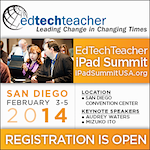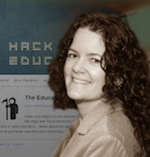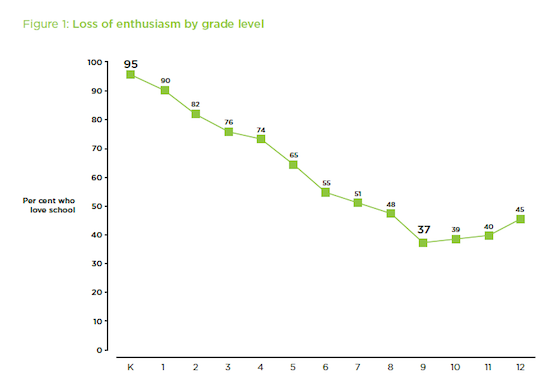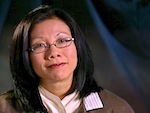PLP Voices blogger Jen Carey summarizes events at this month’s iPad Summit. Follow her links to her live-blogging posts for more details.
 Early this month, I once again had the privilege of attending the iPad Summit put on bi-annually by the EdTechTeacher team (you can read about my previously experiences here, here, and here). This time it was held in beautiful San Diego at the Convention Center downtown.
Early this month, I once again had the privilege of attending the iPad Summit put on bi-annually by the EdTechTeacher team (you can read about my previously experiences here, here, and here). This time it was held in beautiful San Diego at the Convention Center downtown.
When I attend conferences and workshops, I live-blog the event. This way I can capture my reflections in real time as well as bring home some robust notes for my colleagues. (It’s also a great way to keep your attention from wandering.) If you would like to see my live-blog posts from the summit, you may see those at my personal blog.
Innovation with a side dish of iPad
At the kickoff of the Summit, Tom Daccord welcomed us all to the event and highlighted what would be the theme of the event: “It’s not about the iPads. It’s about innovative and profound educational practices.” Over the next 48 hours, this was highlighted across the board. While the tool of focus may have been iPad, at the end of the day it was about creating a robust, innovative, and effective curriculum.
Two high-impact keynotes
The excitement was palpable when keynoters Audrey Watters and Mimi Ito spoke to the rapidly changing impact of technology, not only in the classroom but in every aspect of daily existence.
 Audrey Watters highlighted the many innovative technologies that took decades to achieve full adoption (the mouse was first introduced in 1968!). Why? Because changing practice is hard. We like to do what is familiar and comfortable. However, she argued, we no longer have the luxury of resisting change. Technology has become ubiquitous, and teachers will not succeed at maintaining a pre-Internet status quo in their classrooms. Technology must become as ingrained in our students’ formal education as it is in their personal lives.
Audrey Watters highlighted the many innovative technologies that took decades to achieve full adoption (the mouse was first introduced in 1968!). Why? Because changing practice is hard. We like to do what is familiar and comfortable. However, she argued, we no longer have the luxury of resisting change. Technology has become ubiquitous, and teachers will not succeed at maintaining a pre-Internet status quo in their classrooms. Technology must become as ingrained in our students’ formal education as it is in their personal lives.

Mimi Ito, a social anthropologist who focuses on teens and technologies, argued that the new, connected world in which we live enables individuals to build sophisticated skill sets (writing, marketing, creativity, etc) through individual interests. In fact, students are reading and writing more than they ever have (and despite popular opinion, the quality of writing has not declined).
 Yet, Ito cautioned (adapting the famous William Gibson comment) that while “the future is here” it’s “not very evenly distributed.” While our financially stable students are enhancing their lives in new ways using technology, our current trends and practices further alienate underprivileged youth with limited access to many technologies. We need to ensure that as we progress in building our educational institutions, we do not leave the most vulnerable students behind. Again, the message was clear: technology is here, it’s changing the way we interact with the world, and it requires significant intention to make it meaningful in education.
Yet, Ito cautioned (adapting the famous William Gibson comment) that while “the future is here” it’s “not very evenly distributed.” While our financially stable students are enhancing their lives in new ways using technology, our current trends and practices further alienate underprivileged youth with limited access to many technologies. We need to ensure that as we progress in building our educational institutions, we do not leave the most vulnerable students behind. Again, the message was clear: technology is here, it’s changing the way we interact with the world, and it requires significant intention to make it meaningful in education.
Robust themes
While focused primarily on iPads, the theme throughout the conference was developing a robust and enriched school environment. I was able to witness students build leadership skills through implementing a “Genius Bar,” the power of screencasting in the learning process, the importance of digital portfolios, and emphasis again and again that it’s not about the iPad or the Apps, but how you use the tools that you have. Innovative educators will always use what is available to them to create a robust environment for their students.
After two days of excitement, educators, administrators, and other educational leaders had a myriad of theories, practice, and tools to take back to their classrooms, schools, and districts. I will be discussing not only new tools with my faculty, but the importance and need of implementing them in the classroom. Bringing our curriculum into the 21st century is no longer an option, but a need to stay relevant and to prepare our students for the world they live in now and the future.
Chart: Data presented in Live in the Swamp: Assessing Digital Innovations in Education (Fullan & Donnelly 2013); See original source.
Jennifer Carey
Latest posts by Jennifer Carey (see all)
- How to Get Hesitant Teachers to Use Educational Technology - August 7, 2019
- Those Terms of Service on Popular Websites DO Matter! - April 22, 2014
- How to Infuse Digital Literacy Throughout the Curriculum - March 26, 2014


Trackbacks/Pingbacks